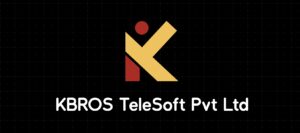Base Transceiver Station (BTS) is the equipment which facilitates the wireless communication between user equipments and the network.
The term BTS is generally and commonly associated with mobile communication technologies like GSM and CDMA. A BTS forms part of the Base Station Subsystem (BSS) and has the equipments (transceivers) for transmitting and receiving of radio signals, signal processors, signal paths, signal amplifiers, and equipments for system management. It may also have equipments for encrypting and decrypting communications, spectrum filtering tools (band pass filters) etc. Antennas may also be considered as components of BTS in general sense as they facilitate the functioning of BTS. A BTS is controlled by a parent Base Station Controller via the Base station Control Function (BCF).The BCF provides an Operations and Maintenance (O&M) connection to the Network management system (NMS), and manages operational states of each TRX, as well as software handling and alarm collection.
The BTSs are equipped with radios that are able to modulate layer 1 of interface Um; for GSM 2G+ the modulation type is GMSK, while for EDGE-enabled networks it is GMSK and 8-PSK.
The Base Station Controller (BSC) provides, classically, the intelligence behind the BTSs. Typically a BSC has 10s or even 100s of BTSs under its control. The BSC handles allocation of radio channels, receives measurements from the mobile phones, controls handovers from BTS to BTS. Networks are often structured to have many BSCs distributed into regions near their BTSs which are then connected to large centralised MSC sites.
Although the Transcoding (compressing/decompressing) function is as standard defined as a BSC function, there are several vendors which have implemented the solution in a stand-alone rack using a proprietary interface. This subsystem is also referred to as the TRAU (Transcoder and Rate Adaptation Unit). The transcoding function converts the voice channel coding between the GSM (Regular Pulse Excited-Long Term Prediction, also known as RPE-LPC) coder and the CCITT standard PCM (G.711 A-law or u-law). Since the PCM coding is 64 kbit/s and the GSM coding is 13 kbit/s, this also involves a buffering function so that PCM 8-bit words can be recoded to construct GSM 20 ms traffic blocks, to compress voice channels from the 64 kbit/s PCM standard to the 13 kbit/s rate used on the air interface. Some networks use 32 kbit/s ADPCM on the terrestrial side of the network instead of 64 kbit/s PCM and the TRAU converts accordingly. When the traffic is not voice but data such as fax or email, the TRAU enables its Rate Adaptation Unit function to give compatibility between the BSS data rates and the MSC capability.
However, at least in Siemens’ and Nokia’s architecture, the Transcoder is an identifiable separate sub-system which will normally be co-located with the MSC. In some of Ericsson’s systems it is integrated to the MSC rather than the BSC. The reason for these designs is that if the compression of voice channels is done at the site of the MSC, fixed transmission link costs can be reduced.
BSS interfaces
Um – The air interface between the MS (Mobile Station) and the BTS. This interface uses LAPDm protocol for signaling, to conduct call control, measurement reporting, Handover, Power control, Authentication, Authorization, Location Update and so on. Traffic and Signaling are sent in bursts of 0.577 ms at intervals of 4.615 ms, to form data blocks each 20 ms.
Abis – The interface between the Base Transceiver Station and Base Station Controller. Generally carried by a DS-1, ES-1, or E1 TDM circuit. Uses TDM subchannels for traffic (TCH), LAPD protocol for BTS supervision and telecom signaling, and carries synchronization from the BSC to the BTS and MS.
Link Access Procedures on the D channel (LAPD), is the second layer protocol on the ISDN protocol stack in the D channel.
A – The interface between the BSC and Mobile Switching Center. It is used for carrying Traffic channels and the BSSAP user part of the SS7 stack. Although there are usually transcoding units between BSC and MSC, the signaling communication takes place between these two ending points and the transcoder unit doesn’t touch the SS7 information, only the voice or CS data are transcoded or rate adapted.
Ater – The interface between the Base Station Controller and Transcoder. It is a proprietary interface whose name depends on the vendor (for example Ater by Nokia), it carries the A interface information from the BSC leaving it untouched.
Gb – Connects the BSS to the Serving GPRS Support Node (SGSN) in the GPRS Core Network.

